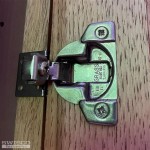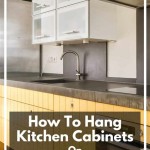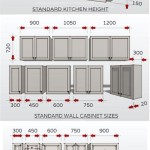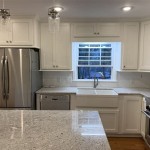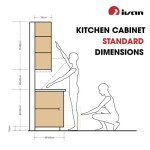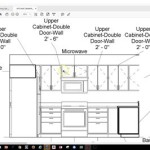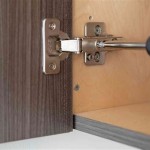Kitchen Cabinet Wood Types
Choosing the right wood for kitchen cabinets is a crucial decision in any kitchen remodel or new build. The type of wood significantly impacts the cabinets' durability, aesthetic appeal, and overall cost. Understanding the characteristics of different wood species empowers homeowners to select the best option for their specific needs and budget.
Solid Wood Cabinets
Solid wood remains a popular choice for its timeless beauty and durability. Each species possesses unique grain patterns and characteristics that contribute to the overall look of the kitchen. Variations in color, texture, and hardness influence both the aesthetic and functional aspects of the cabinetry.
Oak: A classic choice for kitchen cabinets, oak is known for its strength and prominent grain patterns. Red oak features a reddish-brown hue and a more open grain, while white oak has a tighter grain and a lighter, more neutral tone. Both are durable and can handle the wear and tear of a busy kitchen.
Maple: Maple is another popular hardwood choice, valued for its smooth, fine grain and light color. It’s a durable option that stains well, making it versatile for various kitchen designs. Maple's subtle grain pattern allows for a clean, contemporary look.
Cherry: Cherry wood is prized for its rich, reddish-brown color that deepens over time. It has a fine, straight grain and a smooth texture. Cherry cabinets bring a sense of warmth and elegance to a kitchen. However, they are generally more expensive than oak or maple.
Hickory: Hickory is a very hard and durable wood, making it an excellent choice for high-traffic kitchens. It features a dramatic, varied grain pattern with a mix of light and dark colors, adding a rustic or traditional feel to the space.
Birch: Birch is a moderately hard wood with a fine, uniform grain. It's often used in painted cabinets due to its smooth surface, which takes paint well. Birch is also a more budget-friendly option compared to some other hardwoods.
Walnut: Walnut is a luxurious choice for kitchen cabinets, known for its rich, dark brown color and straight grain. It’s a strong and durable wood that adds a touch of sophistication to any kitchen. Walnut cabinets tend to be a higher-end option.
Pine: Pine is a softwood option that is less expensive than hardwoods. It has a distinct knotty appearance and a light color. While pine offers a charming, rustic look, it’s more susceptible to dents and scratches than hardwoods.
Engineered Wood Cabinets
Engineered wood cabinets offer a cost-effective alternative to solid wood, while still providing various design options. These cabinets are constructed from wood composites, offering advantages in terms of stability and resistance to warping.
Medium-Density Fiberboard (MDF): MDF is a composite material made from wood fibers and resin. It has a smooth, uniform surface that’s ideal for painted cabinets. MDF is generally more affordable than solid wood and resists warping and cracking.
Plywood: Plywood is made of thin layers of wood veneer glued together. It’s a strong and stable material that’s less prone to warping than solid wood. Plywood is often used for cabinet boxes, while a veneer of a more expensive wood species may be applied to the exterior for a higher-end look.
Particleboard: Particleboard is made from wood chips and resin. It’s a less expensive option than MDF or plywood, but it’s also less durable and more susceptible to moisture damage.
Wood Veneer: Veneer is a thin layer of real wood applied to a substrate, such as MDF or plywood. This allows for the appearance of a more expensive wood species at a lower cost. Veneer cabinets offer a wide range of style options.
Considerations Beyond Wood Type
When selecting kitchen cabinet wood, several other factors should be considered in addition to the species. The finish of the cabinets plays a significant role in their appearance and maintenance. Painted cabinets offer a wide range of color options and can create a clean, modern look. Stained cabinets highlight the natural beauty of the wood grain and provide a more traditional or rustic aesthetic.
The construction method of the cabinets also impacts their durability and longevity. Frameless cabinets offer a more contemporary look and maximize storage space. Framed cabinets provide a more traditional aesthetic and added strength.
Finally, budget is a crucial consideration. Solid wood cabinets are typically more expensive than engineered wood options. Within each category, different wood species vary in price. Setting a budget beforehand helps narrow down the choices and ensures a cost-effective decision.
By carefully considering the different wood types, finishes, and construction methods available, homeowners can select kitchen cabinets that meet their aesthetic preferences, functional needs, and budget requirements.

5 Common Types Of Wood For Your Kitchen Cabinets

Get Started On Your Project Quote Solid Wood Kitchens Kitchen Cabinets Rustic

Cabinet Wood Types For Kitchen Capitol Kitchens And Baths

Kitchen Cabinet Wood Types Of Cabinets Wooden

Best Wood Types For Kitchen Cabinets Cabinet

Types Of Wood For Kitchen Cabinets Lily Ann

Types Of Wood Cabinets For Your Kitchen Builders Cabinet
Ultimate Guide To Wood Kitchen Cabinets Vevano

Cabinet Colors Choices 3 Day Kitchen Bath Custom Cabinets Refacing Door Styles

Style And Design Cabinet Wood Types Omega Cabinetry
Related Posts

